This post may contain affiliate links, meaning I can earn a small commission from items you purchase (at no cost to you).
Whenever there’s a chance of catching a cold, I try to boost my vitamin C intake to ensure my immune system is at its best. When I was in college, I relied to Emergen-C (the powdered drink), yet these past few years I’ve used foods that are high in vitamin C. I find that natural vitamin C gives me the benefits I need to be at my best.
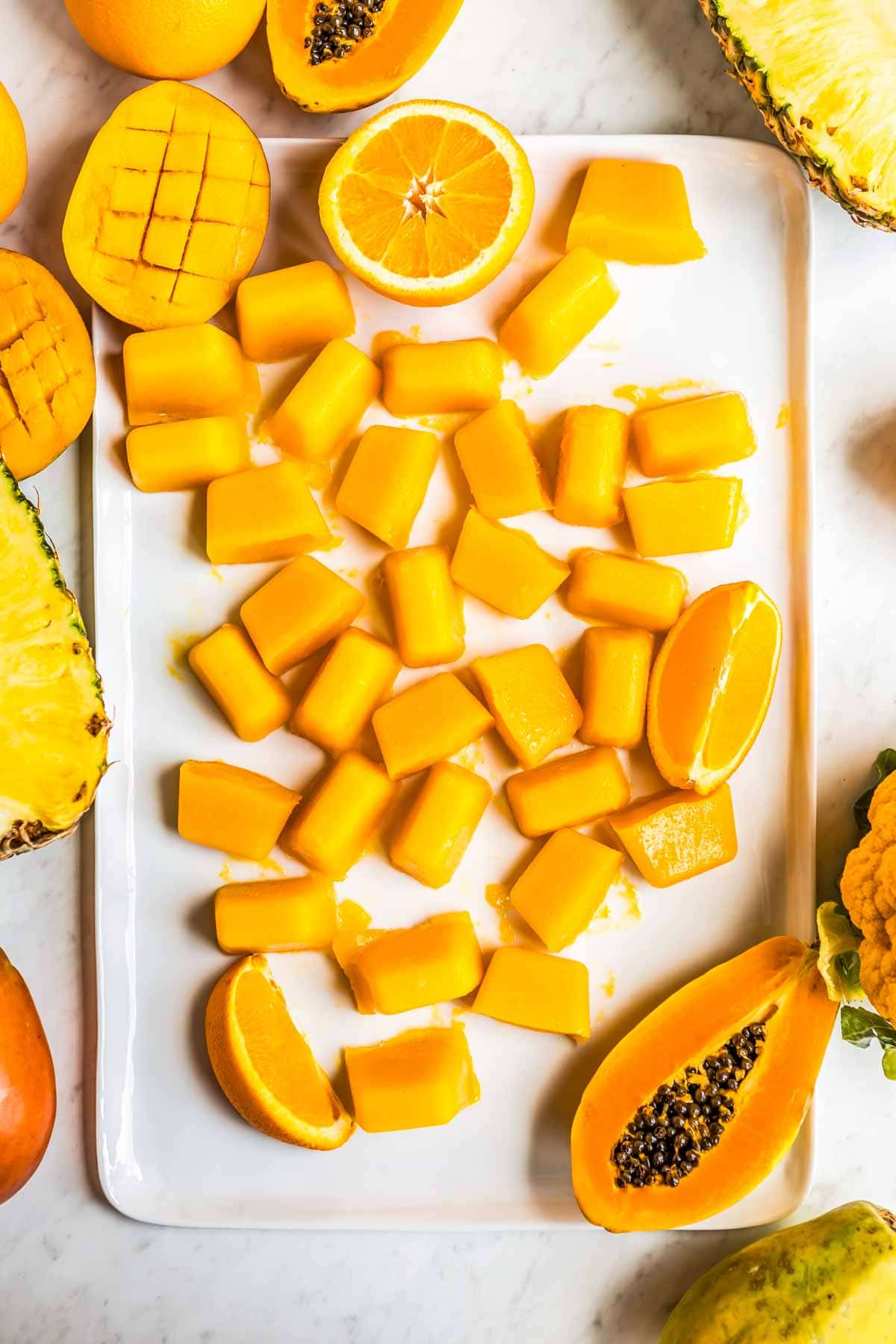
Table of contents
Natural Vitamin C vs Ascorbic Acid
If you’ve ever taken a vitamin C supplement, then it was probably in the form of ascorbic acid. So what is this compound, and which is it really beneficial?
Vitamin C, also known as ascorbate, can be chemically derived. This synthetic form is called ascorbic acid. Just pick up a packaged food item, and you’ll probably see this listed as an ingredient, or in parenthesis next to the vitamin C column. Many foods are fortified with the synthetic form of this vitamin. Studies show that taking a vitamin C supplement is fairly similar to taking naturally derived vitamin C, yet natural vitamin C has more benefits, because of all the other nutrients derived from eating whole foods.
Honestly, most of us aren’t deficient in vitamin C, as long as we regularly eat fruits and vegetables. This vitamin is found in many common foods, so no need to stress about not getting it if you’re drinking daily green smoothies!
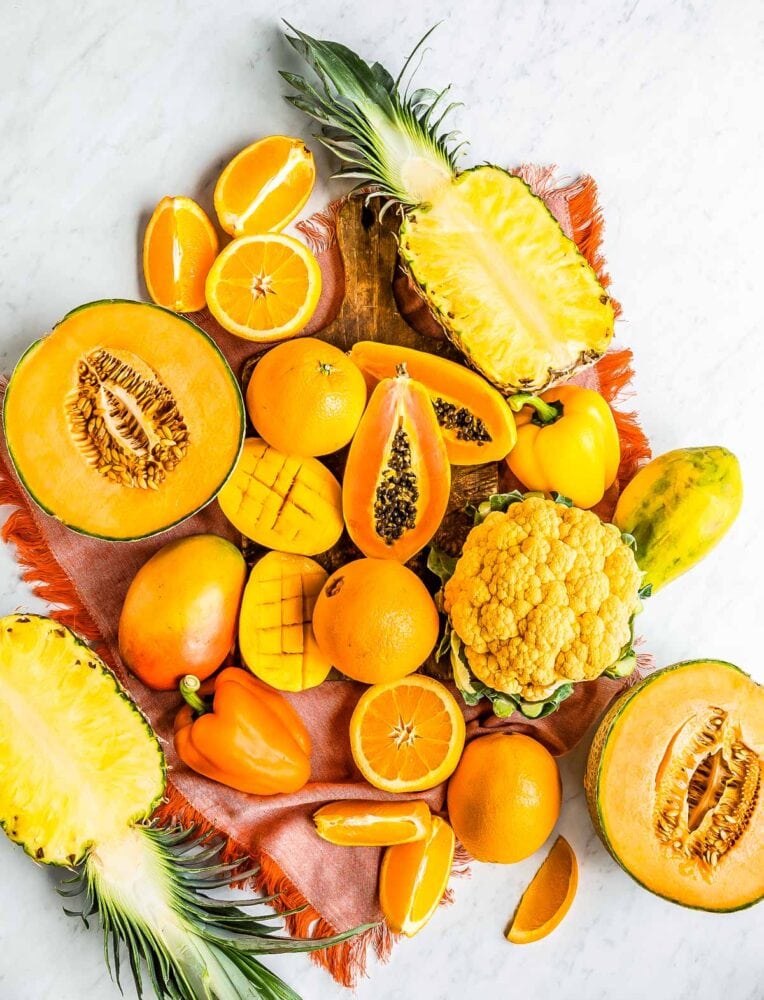
Foods High in Vitamin C
Vitamin C occurs naturally in a whole host of fruits and vegetables. Some delicious, whole foods that give me natural vitamin C benefits are:
- Citrus fruits are a great source of vitamin C. These include oranges, grapefruit, guava, kiwi, lemons, lime, pineapple, and more.
- Papaya
- Cantelope
- Strawberries
- Broccoli
- Cauliflower
- Brussels sprouts
- Peppers
- Black currants
- Potatoes
- Tomatoes
- Kale (and lots of other leafy greens)
- Cauliflower
Make sure to get around 65-90mg of vitamin C a day as a healthy adult, and around 120mg a day when breastfeeding, to get the benefits. To put this in practical terms, 1 orange has approximately 51mg of vitamin C. 1 cup chopped kale has 80 mg. Basically, a green smoothie a day will keep your body happy and vitamin C-boosted.
Green smoothies with natural vitamin C
If you want to give your body the best natural boost in vitamin C benefits, then blend up one of these delicious recipes:
- Kiwi Strawberry Smoothie
- Strawberry Carrot Smoothie
- Pineapple Ginger Smoothie
- Post Workout Green Smoothie
- Smoothie for Bloating
- Tropical Kale Smoothie
- Kale Mango Smoothie
- Grapefruit Smoothie
All the recipes on my blog have the nutrition facts below the recipe, so just scroll on down the post to check out how much vitamin C is in any recipe you want to blend.
Savory Recipes to Boost the Immune System
If you want to make a meal using foods high in vitamin C benefits, then plant based is the way to go. Vegetables are a great source of vitamins and minerals, and can actually taste good too! If soup is your thing, try a vegetarian tortilla soup, Roasted Vegan Pumpkin Soup, or bell pepper + sweet potato soup. If you want more solid meal, then these tacos de papas or my famous loaded sweet potatoes would be perfect.
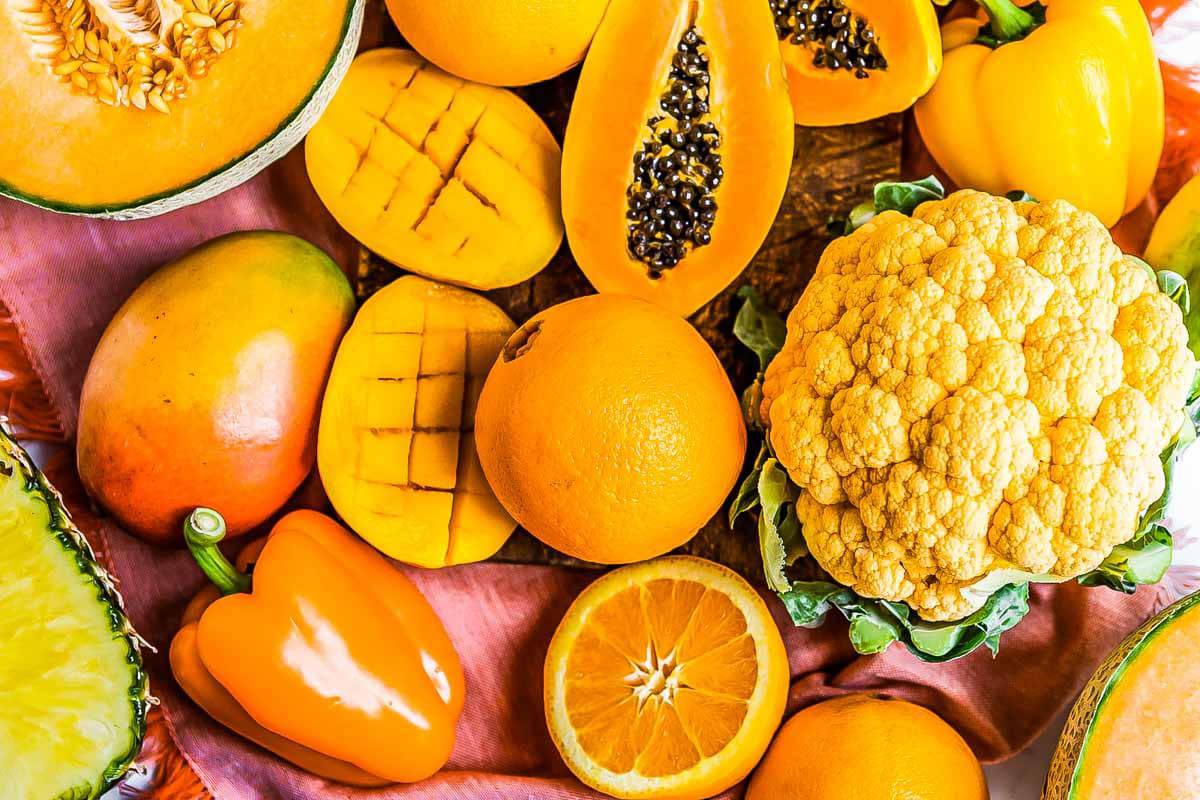
More Benefits of Vitamin C
Did you know that vitamin C does more than boost the immune system? Your body needs vitamin C to produce collagen (hello healthy skin + hair), help the brain transmit messages properly, as well as help the body absorb iron. The antioxidants in vitamin C help the body fight certain cancers, along with aiding in wound care.
Repeat after me: I promise to make sure my diet has enough vitamin C every day!
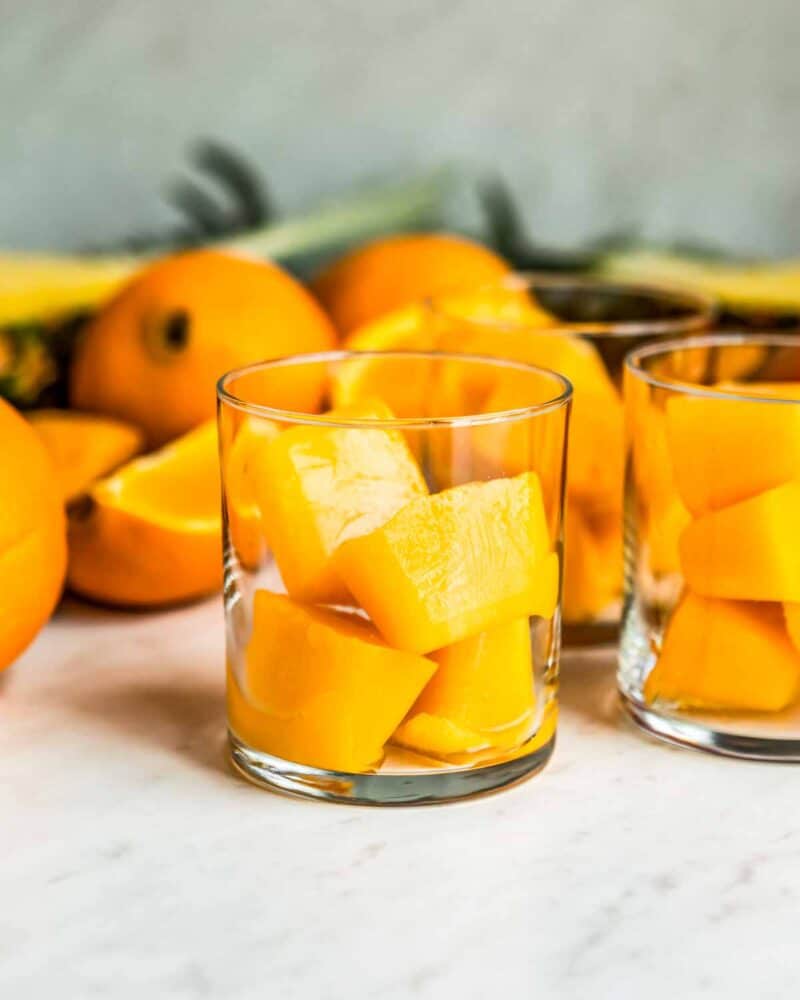
How to Make Vitamin C Smoothie Cubes
First, smoothie cubes are something I love. A smoothie cube is a concentrated blend of fruits, vegetables and leafy greens, liquids, and/or other ingredients (depending on the recipe) that I like to add to my smoothies for an extra boost of nutrients. I’ve created several smoothie cube recipes to get specific natural benefits, just like these smoothie cubes to boost vitamin C.
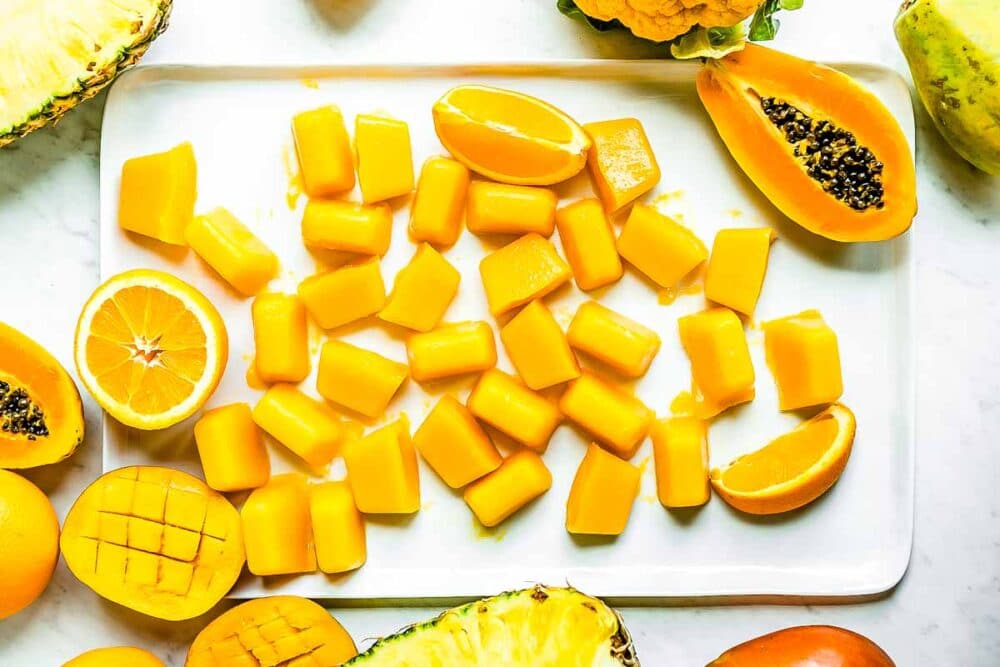
The vitamin C smoothie cubes are great to add to your Best Green Smoothie or when you feel a cold coming on. Four cubes is roughly equal to 1/2 cup fruit. So the cubes can be substituted for some of the fruit or added in place of the fruit – totally up to you; the vitamin C benefits will be felt either way!
Making smoothie cubes is very simple. Just blend all of the ingredients until smooth and pour into ice cube trays. Let them freeze until firm then store in the freezer to have on hand whenever you need an extra dose of the immune boosting vitamins.
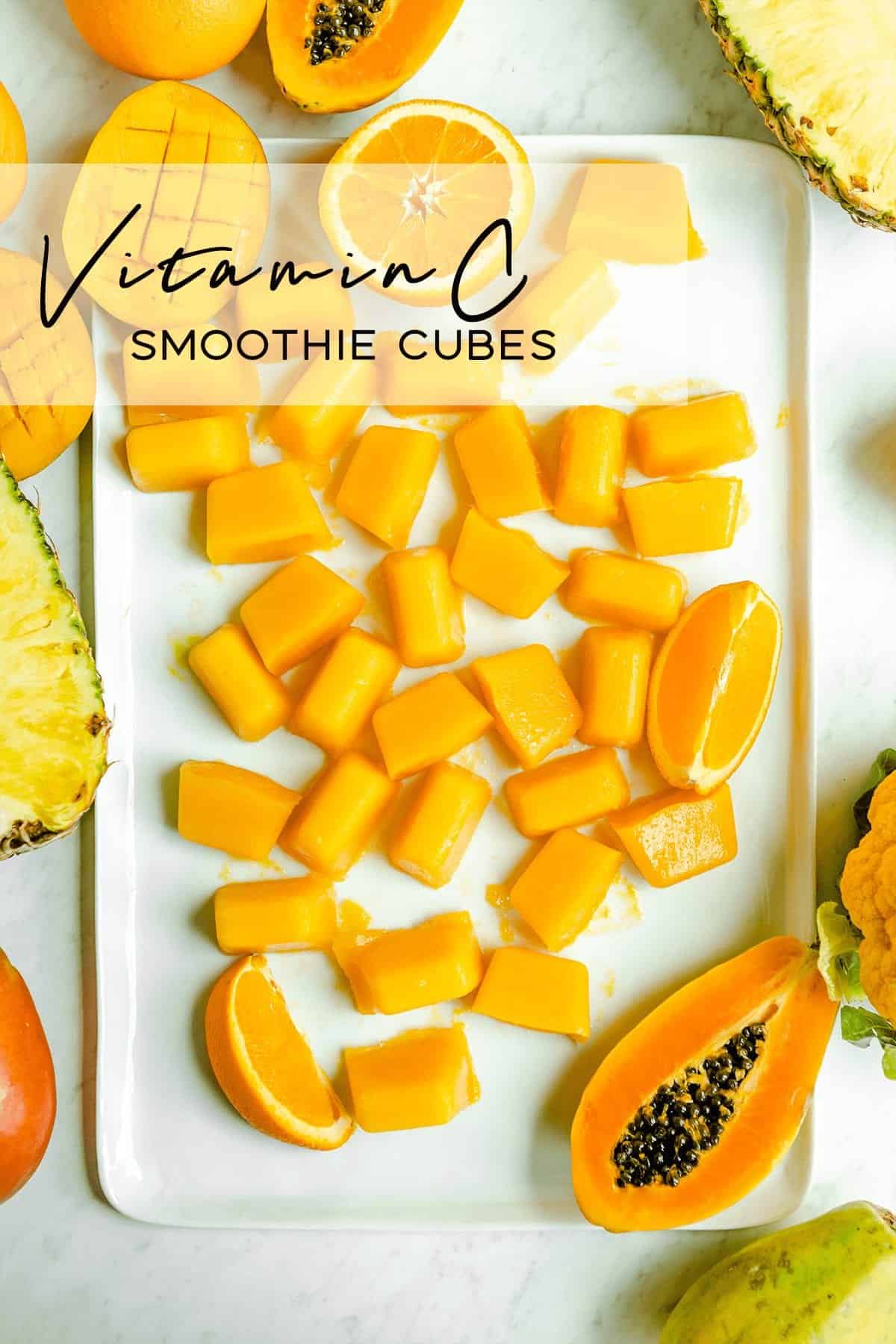
How do you like to get in all the vitamins and minerals you can each day? I love when I can get in a vitamin naturally, and make the most of the benefits that nutrient provides.
Let me know if you make these vitamin C cubes by leaving a comment + review below, because I’d love to know what you think!
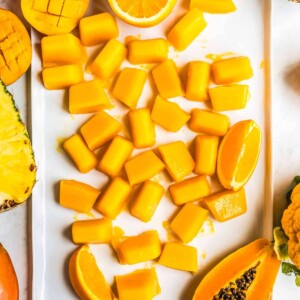
Vitamin C Smoothie Cubes
Ingredients
- 2 oranges peeled and halved
- 1 cup papaya cubed or sliced
- 1 cup pineapple cubed
- 1 mango cubed
- 1 cup orange cauliflower florets see notes
Instructions
- Place ingredient into the blender in the order given.
- Puree until smooth. It should not need any liquid because of the oranges, but if it does, add a little water or orange juice.
- Spoon into two 16-well ice cube trays, about 2 to 2 1/2 tablespoons per well. Freeze until firm, at least 3-4 hours, or overnight. Transfer to an airtight, freezer-safe container. Will keep for several weeks in a normal freezer, or up to six months in a deep freezer.
- When ready to use, add 4 Vitamin C Smoothie Cubes to your favorite smoothie to replace 1/2 cup fruit. Add more or less cubes depending on preference.
Notes
- Substitute any vitamin C-rich fruit or vegetable, such as strawberries, sweet bell pepper, cauliflower, cantaloupe, kiwi, or others in place of 1+ of the fruits listed above. Nutrition information will change with any substitutions.
- Frozen fruit and cauliflower can be substituted for the fresh fruit.

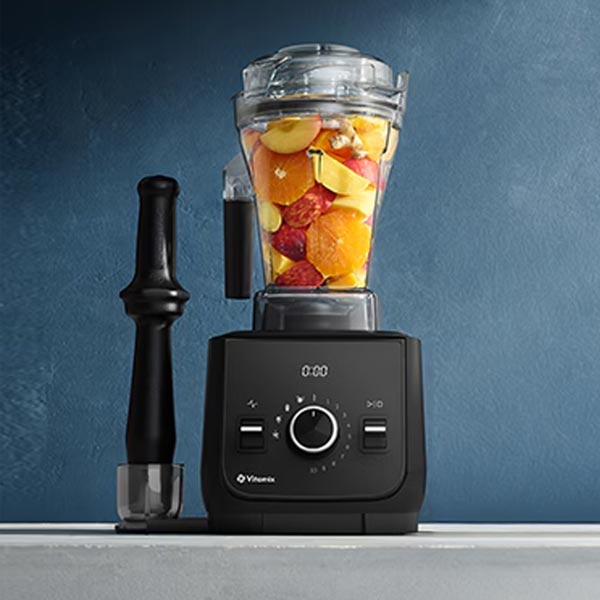
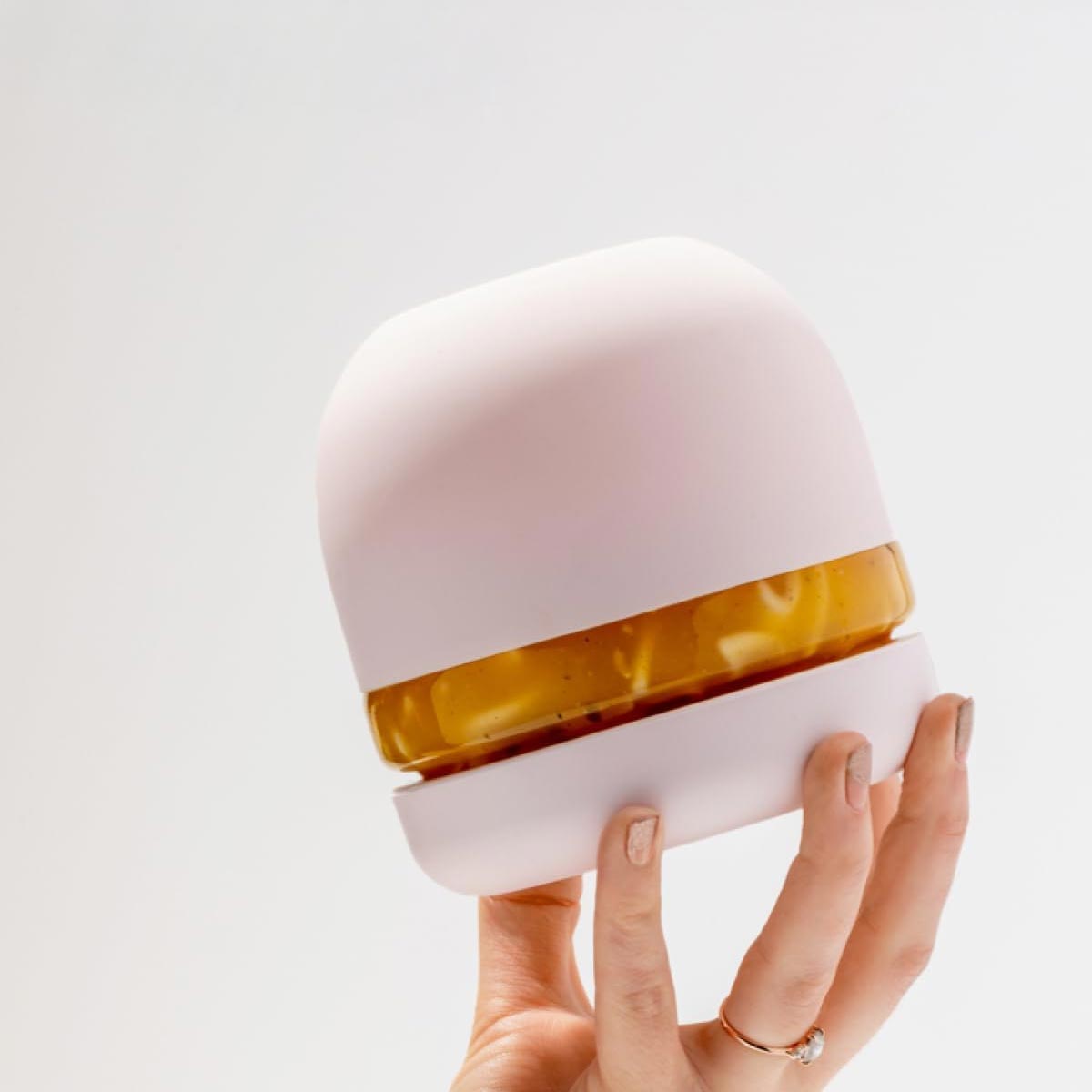
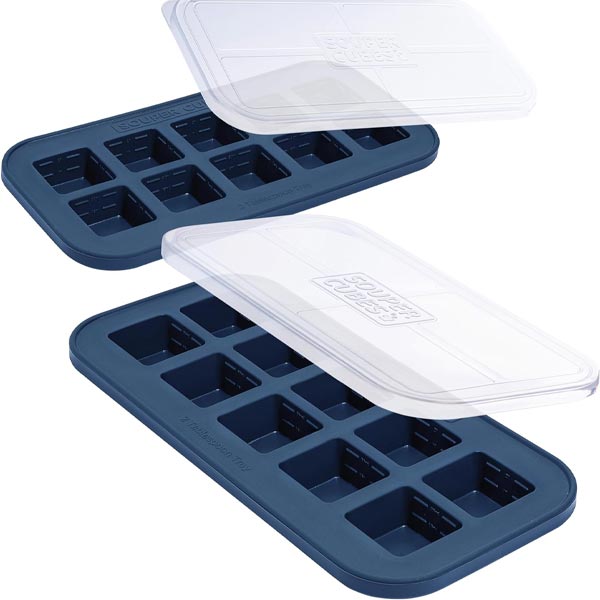

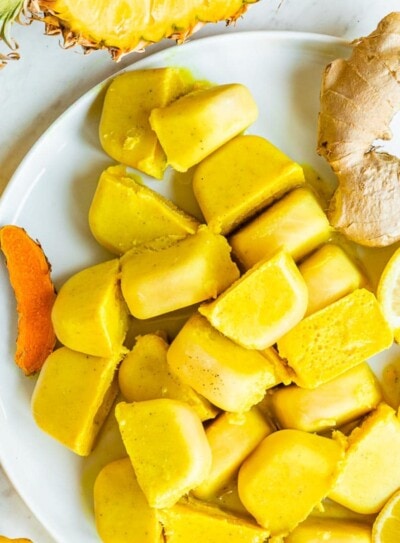
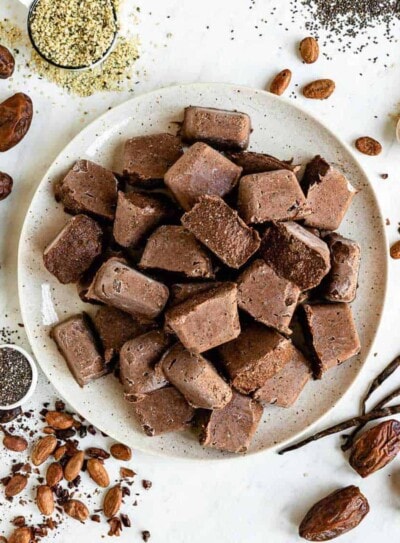
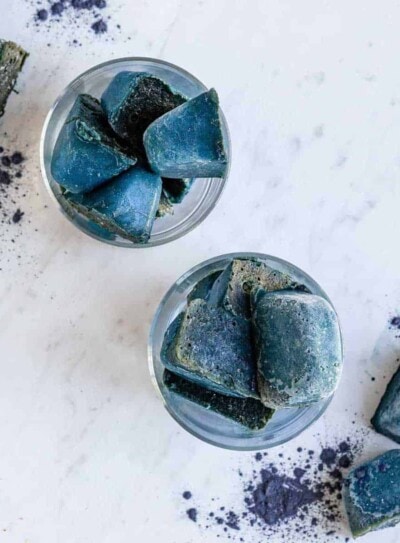
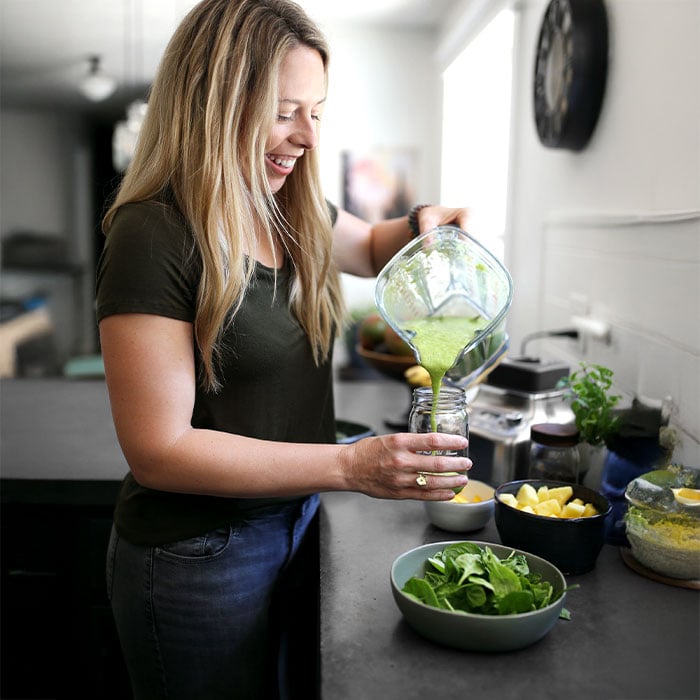









These are delicious!!
They are and great to have on hand to throw in your smoothies! 🙂
I have a lemon tree and had LOADS of lemons to use, I juiced and froze them in cubes for future Morning Tonics. I was just wondering this morning about freezing the juice of oranges and grapefruits a neighbor gave me. I hadn’t thought about blending the entire orange for cubes. I use frozen pineapple and mango from Trader Joes, so I’m not sure I’d need to blend those into cubes with the oranges. I likely won’t get out for papaya or cauliflower, so I think I’ll be freezing a lot of just plain orange cubes.
As someone else mentioned, I’ll need a bigger freezer!
Hey Kimberly! First of all, I’m so jealous you have a lemon tree. It would be so awesome to have fresh lemons at your fingertips!!
I think it’s a great idea to blend and freeze the oranges and grapefruits. If you plan to use them in your smoothies anyway, I think blending them as opposed to juicing them would be the better option. That way, you’ll get the fiber and all the awesome nutrients that are in the pith (the white part). I’d recommend zesting them (you can freeze the zest as well for future smoothies and/or other recipes), then peeling them, and then blending and freezing.
Done….in the freezer waiting to be bagged. Used regular cauliflower since the orange one is not available right now. Had a bit left over which will be a tasty frozen dessert treat.
Nice job!
Utilizing the Smoothie Cubes idea for all seasons.
So convenient. Great idea.
Sorry, went back and re-read the notes that I somehow skipped over. Yes! You can substitute frozen for fresh!
No worries, hope the cubes worked out great for you!
Silly question perhaps but can you use frozen fruit to make these cubes?
Not a silly question and yes, you definitely can use frozen fruit to make these!
So love this idea.
I buy washed and ready to use mixed green leaves in bags, roll them up tight and freeze the just slice off 2-3 inches and add to the blender. Leaves stay fresh and money saved.
Also bags of washed mint leaves and chopped celery including the leaves.
Pomegranates seeded and frozen on trays then bagged. Need a bigger freezer
Wow, Sally! Your prep work is on point!
Great idea! What is the ‘orange cauliflower’ (last ingredient)? Also, do I need to boil the cauliflower in water first?
Hey Ankita,
That is a type of cauliflower. If you do not have orange cauliflower then I would suggest using regular or the other suggestions in the “notes” section.
Hope that helps!
Awesome! I love this idea as I hate taking supplements in “pill” form.
I’m going to add a couple to my water once a day.
I am the same way. Show me how I can consume this in my diet so I don’t have to take supplements or a pill to get it. I prefer the raw and real part of it and that is exactly what this is! Enjoy!! 🙂
Your book was what got me started on the green journey. Love it !
My concern is raw cauliflower???? In India, we often have tiny worm infestation in the florets, so Indian cuisine rarely uses raw florets. What other substitutes can we use for the cauliflower please ?
Hey Smita,
Oh gosh I am sorry to hear that. For this recipe we do not have a substitute for cauliflower so I would just leave it out completely.
Interesting idea. if nothing else it is a least tasty !
How effective is the potency of the Vitamin C in this process?
Hey Jeff,
This way of getting your vitamin C is very effective since you are getting it directly from the source.
WOW!! I’m blown away by this recipe + can’t wait to get in the kitchen. This are going to be amazing when I feel a cold coming on!
Thanks Amanda!!
It’s crazy to think that something so delicious can be packed with tons of vitamins too!!
Never thought of doing this before… Do you think that I need to use the cubes only with certain recipes or combinations?
Hey Sarah,
I would add these into smoothies that have a tropical feel to it. Like our Beginner’s Luck!!
That color is so beautiful! I’m just imagining how good these would taste all blended up. If it weren’t for my daily green smoothies, I’m not sure I’d be getting all of my vitamin C in. Gonna make a batch of these stat!
Hey are so beautiful and vibrant!! I love the splash of color it adds to my freezer. You are going to love these when you try them 🙂
I love this idea! I’m definitely using this to keep the summer colds and back to school sniffles away. How long will they stay good in the freezer?
Hey Kim,
This will definitely help with keeping those back to school germs away!! If you store these in a reusable freezer bag they should stay good for 3 months. Although I have a feeling you will use them up before then 🙂
Hope that helps!
I love this idea so much!!!! I’ve often wondered how I can boost my smoothies when I have a cold and I think this is the perfect solution!!! I could see this smoothie cube booster being really good in Beginner’s Luck… my fav of all your smoothies. Do you have any tips for storing these in my freezer? I’m wonder what would be the best way …
Hey Dani,
This would taste delicious in Beginner’s Luck so I would definitely give it a try. The best way would be to freeze these in your typical ice trays and then store them in a reusable freezer bag 🙂